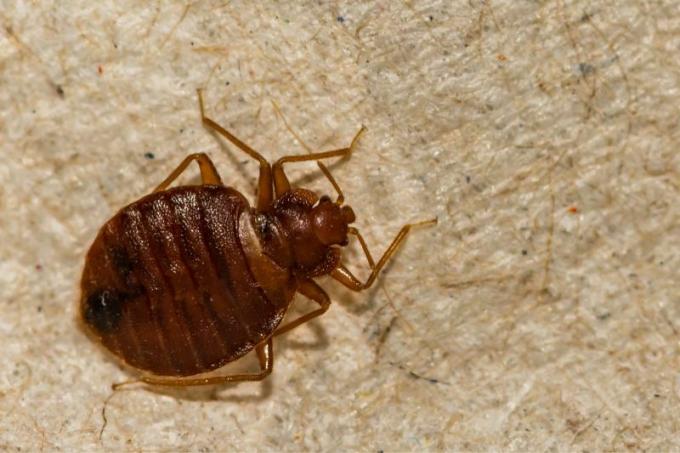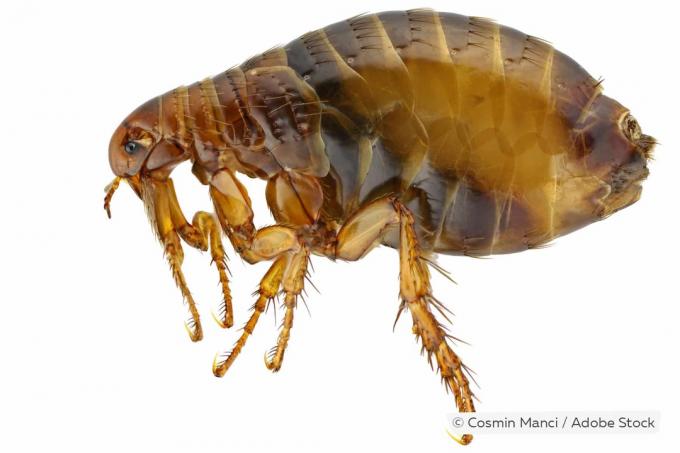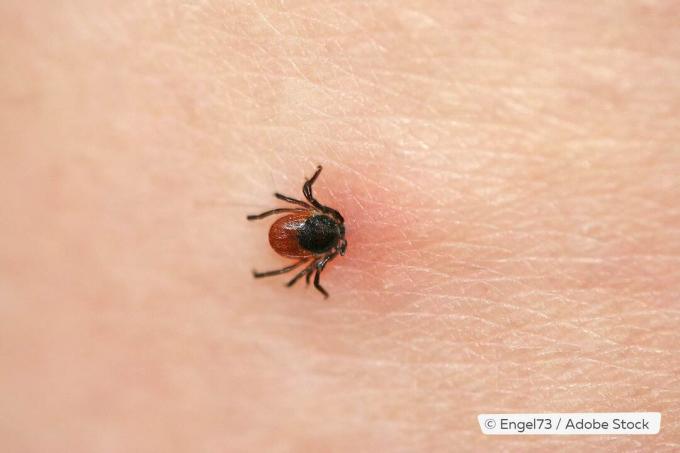
Most small black biting bugs are not bugs at all, but other insects. This article explains which other animals come into question.
In a nutshell
- Especially in summer, small animals can quickly be found on the skin outdoors
- some can bite or sting
- they are almost always not beetles
- Biting insects can also occur in the house
Table of contents
- Black biting bugs from B – L
- M – Z
- Insect bite - what to do?
- prevention
- frequently asked Questions
Black biting bugs from B – L
bed bugs (Cimex lectularius)
In the case of a heavy bed bug infestation, several of the animals can attack the sleeper at night and suck blood. This is often not noticed until the next day.

- Happen: always in the house, often in bed, brought in by holiday items, can occur all year round, also hides behind wallpaper
- Characteristics: very small, hardly visible to the naked eye, traces of faeces near the bed indicate infestation, bites are very itchy, occur especially at night, animals are nocturnal
- Combat: in case of heavy infestation pest repellent, otherwise suck out cracks, Clean the bed completely
A notice: To avoid bed bug infestations, it makes sense to unpack your vacation bags outdoors and wash your clothes immediately before putting them back in the closet.
fleas (Siphonaptera)
Fleas are often transmitted by pets and can then be seen as small black creatures on the skin, jumping to get around. They are difficult to catch.

- Happen: different fleas depending on the animal species, in the house also near animals, for example in cat baskets or dog beds
- Characteristics: a few millimeters long, dark, flat, strong hind legs, jump very far, bites almost always as a kind of road on the skin, itching badly
- Fight: Catch fleas if possible, change clothes, clean pillows, blankets and baskets, treat pets with veterinary approved products
black fly (Simuliidae)
While the black fly is not a beetle, it can be a nuisance outdoors and is not always easy to spot, especially at dusk.

- Happen: common outdoors everywhere, especially near pastures and open landscapes
- Characteristics: a few millimeters in size, dark body, often en masse, Stitches are very itchy
- Combat: Impossible outdoors, protect with long clothes
lice (Pediculidae)
In addition to the typical head lice (Pediculus humanus capitis), there are other lice that can infest humans and resemble small beetles, such as body lice. What they all have in common is that they suck blood.

- Happen: almost exclusively on humans or animals, all year round
- Characteristics: a few millimeters in size, no wings, elongated, dark body
- Fight: Remove head lice with approved products, remove hair if infestation is severe, do not forget to repeat the treatment, clean hats, clothing, combs and brushes
M – Z
mites (acari)
There are different types of mites that can infest humans. This includes, for example, grass mites (Neotrombicula autumnalis) lurking outdoors in tall grass.

- Happen: everywhere, grass mites especially in tall grass
- Characteristics: small, dark body, belong to the arachnids, only larvae feed on blood, Bites are very itchy and can catch fire quickly
- Combat: Prevent grass mites from biting by keeping the grass short
backstroke swimmer (Notonectidae)
The backswimmer is not a beetle, but a species of bug. The backswimmer's sting, while painful, only occurs when the animal is being held.

- Happen: in many freshwater bodies
- Characteristics: swims on its back, dark body
- Combat: is not necessary, the bug only bites when there is danger
A notice: There are some bugs that live almost exclusively in water and can actually bite or sting. These are often smaller beetle species that are difficult to distinguish from one another.
ticks (Ixodida)
Ticks are most likely to be confused with beetles before they get bigger while sucking blood. Unlike many other biting insects, ticks can transmit serious diseases.

- Happen: anywhere outdoors, almost all year round
- Characteristics: a few millimeters in size, difficult to see with the naked eye, flat build, attaches itself to the puncture site, but is often not noticed until late
- Combat: Ticks cannot be fought outdoors, if possible prevent bites, avoid taller vegetation outdoors
A notice: Ticks can transmit Lyme disease or meningitis, and there is a vaccination against the latter.Just in the tick season you should check your body more often.
Insect bite - what to do?
The most important thing is immediate cooling of the bite site. This ensures that the swelling and redness do not spread further. It also reduces any pain. Further treatment is often not necessary, but cooling ointments or gels from the pharmacy can be helpful.
prevention
Outdoors is the best prevention to show as little exposed skin as possible. Then insects can't even bite. Long-sleeved clothing in light colors protects most effectively. High, closed shoes also protect against ticks and insects in the grass. It is also important never to catch bugs, insects and other small animals with your bare hands.
frequently asked Questions
Most insects do not pose a major threat. It is most dangerous when the bites become infected, for example because you have scratched them.
On the one hand, a visit to the doctor is advisable if there is a suspicion of an allergic reaction, but on the other hand even if the bite becomes infected or the symptoms do not improve after a few days or even aggravate.
Fly screens on windows and doors are best suited. In addition, plants and pets should be checked for insects as soon as they come into the apartment.



